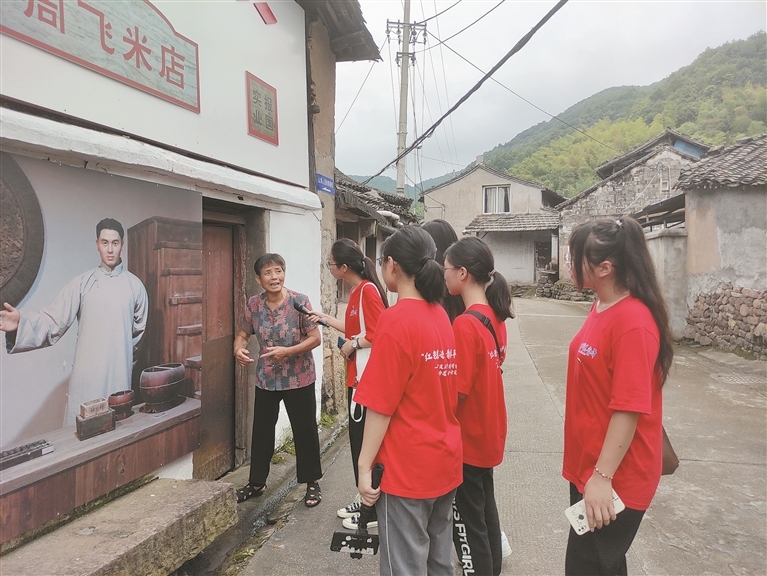|
The “post-2000s generation” strives to be the “Guardian” of historical revolutionary sites
Time:2021-08-17 Click:
Youth college students are on a field visit, listening to a red story. (Photo by Qiu Baoli)
In the morning of August 11, the Jian’ao Village of the Yinjiang Town welcomed a group of special visitors, i.e., 10 young college students of the “post-2000s generation”. On that day, these students paid field visits to 7 red historical revolutionary sites, including the former residence of “Mother of Jian’ao”, the site of war for grain in Jian’ao, and the tomb of martyr Chen Xiaoyun and so on, either seriously taking notes or taking photos with cameras, so as to collect as much information and materials for making a red electronic file.
As is learnt, this is the protection action of 100 red revolutionary sites in Haishu themed “youth searching for red relics” launched by the Youth League Committee of the CPC Haishu District Committee and also one of the youth summer internship projects in the Haishu District.
“Under the guidance of the Party History Research Office of the CPC Haishu District Committee, they will conduct field visits to nearly 100 historical sites of the red revolution in the district, record relevant data and historical information of historical sites with pictures and texts, and convert the information into electronic files.” A relevant person in charge of the Youth League Committee of the CPC Haishu District Committee said. Recording the historical traces of the red revolution by digital means is a special way of protection itself. Among these historical sites of the red revolution, there are memorial halls and monuments that have been built, physical architectural sites that have not yet been protected, and there are no physical buildings but red stories that have been passed down word-of-mouth. For historical sites without entities, college students will record relevant historical information of historical sites as the basis for existence through interviews with and inquiries from local people, and sort out the data of each historical site of the red revolution to work out electronic files.
“A more effective way for the ‘post-2000s generation’ to truly understand the original aspiration behind the historical traces of the red revolution is to feel and understand it personally through field visits.” Zhang Yanzhu, a youth teacher of the School of Marxism, Ningbo University of Technology, said. As the person in charge of the practice project, Jin Rumeng, a sophomore, was deeply impressed by the experience of looking for the place where martyr Lv Yunzhou sacrificed, saying: “It rained that day. The place where the martyr died was deep in the mountain. We had to go up the mountain on foot. After coming down, we found that our legs and feet were covered with leeches. Although a little scared, we never had a thought of giving up. We must find every revolutionary site.”
“Gathering various social forces such as those of colleges and universities, conducting field investigation on red resources, comprehensively figuring out their nature, category, historical origin, protection and utilization, and establishing and improving a comprehensive database of red resources is of great significance to keep the root of red.” A relevant person in charge of the Party History Research Office of the CPC Haishu District Committee said. For the next step, on the basis of improving the comprehensive database, we will strengthen the integration of modern science and technology and strive to make achievements in the protection and utilization of historical revolutionary sites of Haishu recognition.

